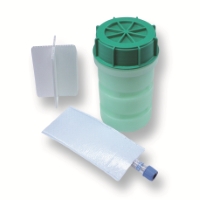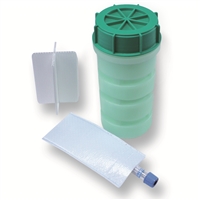Infectious substances are substances which are known to contain, or are reasonably expected to contain, pathogens. Pathogens are defined as micro- organisms (including bacteria, viruses, rickettsiae, parasites, fungi) and other agents such as prions, which can cause disease in humans or animals.Cultures are the result of a process by which pathogens are intentionally propagated. This definition does not include human or animal patient specimens.Patient specimens are those collected directly from humans or animals, including, but not limited to, excreta, secreta, blood and its components, tissue and tissue fluid swabs, and body parts being transported for purposes such as research, diagnosis, investigational activities, disease treatment and prevention.Medical or clinical wastes are wastes derived from the medical treatment of animals or humans or from bio-research.
Category A Infectious Substances are infectious substances in a form that, when exposure to it occurs, is capable of causing permanent disability, life-threatening or fatal disease in otherwise healthy humans or animals. They are assigned the following UN numbers and proper shipping names: UN 2900 – Infectious Substance, affecting animals only.Assignment to UN 2900 is to be based on the known medical history and symptoms of the source animal, endemic local conditions, or professional judgment concerning individual circumstances of the source animal. If there is any doubt as to whether or not a pathogen falls within this category it must be transported as a Category A Infectious Substance.Wastes containing Category A infectious substances must be assigned to UN 2900, as appropriate.To assist in the assignment of an infectious substance into Category A see the Indicative List below:
African swine fever virus (cultures only)
Avian paramyxovirus Type 1 – Velogenic Newcastle disease virus (cultures only)
Classical swine fever virus (cultures only)
Foot and mouth disease virus (cultures only)
Lumpy skin disease virus (cultures only)
Mycoplasma mycoides – Contagious bovine pleuropneumonia (cultures only)
Peste des petits ruminants virus (cultures only)
Rinderpest virus (cultures only)
Sheep-pox virus (cultures only)
Goatpox virus (cultures only)
Swine vesicular disease virus (cultures only)
Vesicular stomatitis virus (cultures only)
The list, however is not exhaustive. Infectious substances, including new or emerging pathogens, which do not appear in the table but which meet the same criteria must be assigned to Category A.
Note:
Biological Substances, Category A shall transported by certified couriers!
Couriers should be reputable and experienced in transporting material of this nature. If relevant, arrangements must be made by the shipper to ensure that the operators are able to carry consignments containing dry ice. If the specimens are being consigned by air, it is essential that a courier is employed and that they are consigned as freight – samples are not permitted on aircraft in hand luggage, checked-in baggage or carried on the person.


620-packaging-complete-set.jpg)
-White.jpg)


-White.jpg)
